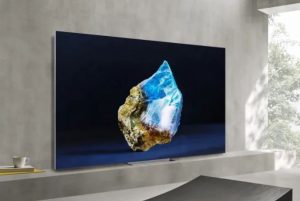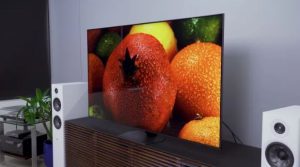The world of televisions is full of acronyms. They are everywhere you look for TVs from brands like Samsung, LG, TCL, Sony, and others and they are crucial threefour- and five-letter codes to understand. Most of the time we’re familiar with terms such as HD as well as 4K however when we start to discuss alphabetic pairings such as OLED LED, QLED, and even QD-OLED the world can become confusing quickly. But don’t fret We’re here to help.
The examples above are simply different display and lighting technologies used by TV companies to create a picture on the TV screen. Today, we’ll be looking at two well-known display technologies: LED and OLED. The former refers to “organic light-emitting diode,” while the latter refers to “light-emitting diode”. Although these two types of TV may appear similar when they are on display however they are distinct in the way they produce the image and the brightness or color of the image can be.
If you’re looking to buy an upgrade to your TV, we’ve listed the top offers on 4K televisions as well as the most popular OLED TV sales that are available.
What is the meaning of LED?

Televisions that are not OLED are composed of two parts that are an LCD panel and the backlight. The LCD panel is made up of pixels tiny dots of color that comprise the image of a TV. By themselves, the pixels can’t be observed without an illumination source. If light from the backlight is reflected through an LCD the pixel, you are able to see the hue.
“LED” in LED TV refers to the backlight “LED” in LED TV is simply a reference to the way in which the backlight is created. It was in the past that a heavier and less efficient technology known as CCFL (cold-cathode fluorescence light) was employed. Nowadays, almost every flat-screen television (sans OLED) utilizes LEDs as a backlighting source. So, when you hear the phrase “LED TV,” it simply means an LCD TV with LED backlighting.
But that, not each LED TVs are the same. There may be variations in the amount and quality of LEDs employed, which can lead to different things such as the brightness as well as black level. For instance, you’ve likely seen or heard about the QLED Televisions. It’s a kind of LED TV which makes use of quantum dots to increase lighting and color. We’ll go into more detail about QLED later however, here’s an excellent review of the major differences between OLED and QLED TVs.
What exactly does OLED refer to?

As previously mentioned in the previous paragraph, it’s important to note that the “OLED” in OLED TV is “organic light-emitting diode.” OLEDs are unique in the sense of being able to create both color and light by a single diode whenever they’re fed with electricity. Due to this, OLED TVs don’t require a separate backlight. Each pixel is a separate source of light and color.
One of the main advantages of OLED screens is they are slim and flexible. However, the most important benefit in comparison with LED TVs, is that every individual pixel has its own power and luminance (as contrasted to LED TVs, which feature permanent pixels which need an external light source for viewing). When the TV is in operation, you can clearly see the light source. When it’s off it’s not emitting any lights at all It’s totally black. We’ll talk about how this affects the black level in a minute.
At present, LG Display, famed for its the top-of-the-line LG OLEDs such as LG Display’s G3 Series, is the sole producer of OLED panels for televisions. Thanks to the partnerships between LG Display and brands like Samsung and Sony and others, you’ll be able buy Samsung as well as Sony OLEDs like Samsung S95C and Sony A95L. Samsung S95C as well as the Sony A95L. While these models are still using picture processing tools designed by the respective companies The OLED panels come made by LG Display.
Is QLED similar to OLED?

Although those pesky acronyms might seem like they do but they are not the same. An OLED TV isn’t similar to QLED Television. In actuality both types of TVs are utterly distinct. Do you remember how OLED TVs can produce lighting and colors without backlighting? This is the opposite for QLED TVs.
QLEDs actually have the most similarities to traditional LED-LCD televisions. The only distinction is the fact that QLEDS contain an array of quantum dots that are placed between their backlights and screen. When light travels through these blots of chemicals that reflect light, the source of light is enhanced prior to hitting the screen’s back. When we say enhanced, we’re talking about the screen is brighter and much more vivid image than the one you’d see on a screen that’s not QLED.
What is the QD-OLEDs?
Today, there’s an image technology that blends the best features of quantum dots and QLED lighting with self-emissive, organic pixels. These TVs are referred to as QD-OLEDs and are currently produced in each of Samsung along with Sony. Without going into the technical details of the picture tech one can imagine the QD-OLED as an traditional OLED that is infused by quantum dots. The result of these displays is a television that has high contrast and colors, in addition to a superior brightness.
Which is better? LED TV or OLED TV?
It’s time to test these two technologies against one the other to examine how they compare in terms of factors like contrast, colors and viewing angle, as well as brightness and other performance factors.
Editor’s Note: As OLED TVs remain a high-end display, we’ve evaluated OLED only with high-end LED TVs with similar performance capabilities (except obviously, in the price segment).
Black level
The ability of a display to create deep, dark blacks is probably the most important aspect in the achievement of high-quality picture quality. The deeper blacks will allow for greater contrast and brighter shades (among others) and, consequently, an even more vivid and realistic picture. In terms of dark levels OLED is the clear leader.
LED TVs are powered by backlights from LEDs that shine behind an LCD screen. Even with the most advanced dimming technology that allows for selective dimming of LEDs that don’t have to be turned on at full volume LED TVs have traditionally had a difficult time producing solid black levels. They also be affected by an effect known as “light bleed,” where areas of the screen that are lighter produce haze or bloom within darker regions.
OLED TVs don’t suffer from any of the black-level issues that plague regular LED televisions. If an OLED pixel does not receive electricity, it won’t be able to produce any light, and is thus, completely black. It seems like an obvious option to us.
Winner: OLED TV
Brightness
In terms of brightness LED TVs have the advantage of having a substantial advantage. The backlights of LED TVs are made out of large and powerful LEDs. Thanks to the addition of quantum dots this brightness is maintained regardless of the fact that the size of individual LEDs decreases. OLED TVs can be quite bright too and, with these dark black levels that the contrast between most bright and darkest spots on the screen gets more exaggerated. However, turning up OLED pixels to maximum brightness for prolonged time periods can reduce their life span and is a little longer before returning to a complete black.
In light of these factors it’s crucial to know that all modern TVs regardless of whether they’re LED, OLED or QLED provide more than adequate brightness. The next consideration is what the television is employed. In dark areas in a dark room, an OLED TV will be the best choice, whereas LED TVs will be able to outshine them (quite actually) in well-lit environments.
It’s also important to note the fact that OLEDs have seen huge improvements in recent times with OLED brightness, which makes OLEDs perfectly suited for almost every situation, except for direct sunlight shining directly onto the screen. But, when you compare them directly to LED TVs, they have the advantage.
A winner by the nose LED TV
Color space
OLED was the dominant choice in this class, but thanks to increasing the quality of the backlight quantum dots have enabled LED TVs to leap forward in accuracy of color, brightness and volume of color which puts them on par with OLED TVs.
For those looking for TVs with wide color gamut as well as HDR can find both LED and OLED TV models that have these functions. OLED’s higher contrast ratio will provide it with a slight advantage in regards to HDR when it is viewed in dark areas, but HDR on a top LED TV screen gives it an advantage because it is able to create well-saturated colors even at extreme bright levels, which OLED isn’t able to match.
Winner: Draw
Time to respond as well as refresh rate. input delay

The term “response time” refers to the time required for each individual pixel to switch states. A pixel’s state does not comprise just its color, but as well its brightness. With a quicker response time you will experience less blurred motion and fewer artifacts (source material aside).
Because OLED pixels combine light source and color source in one diode, they switch states extremely quickly. Contrary to LED TVs, they make use of LEDs to create brightness, and display “shutters” to create color. While the brightness of LEDs can be adjusted in a matter of seconds, LCD shutters are by their nature less responsive to changes in state.
OLED has the fastest reaction time among all TV technologies currently in use currently, which makes it the clear winner in this respect.
The rate of refresh is the frequency at which the image displayed on screen changes. The more rapid the rate more smooth the images appear and the simpler it is to discern the details in content that is fast-moving such as sports. The majority of new TVs are capable of a refresh rate of 120Hz which means that the whole image is refreshed 120 times a second. Some models can even go to 120Hz when used with a compatible gaming computer.
If refresh rates were merely an issue of hertz, we’d consider OLED TV the winner, simply because it has rates up to 1000 times more that LED televisions. However, speed isn’t the only thing to consider. Contrary to TV shows and movies that use a single speed of refresh, games usually utilize variable refresh rates. This basically means that the rate is different during different phases of the game. If the TV isn’t able to meet these rate fluctuations then you’ll end up with image tearing, an apparent jerkiness which results due to the difference between the rate used by the game and the one the TV would like to utilize.
This is the reason why gamers particularly, require TVs that are able to handle VRR, or the Variable Refresh Rate. However, neither LED nor OLED televisions have an advantage in VRR. Certain models are equipped with VRR however, while others do not. However, the majority of televisions nowadays are equipped with VRR, with some basic models offering VRR as a feature. The gaming console also needs the ability to support VRR, although this shouldn’t be too much of an issue if you have the latest Xbox Series X, PS5 or even the Xbox One and PS4.
In addition, input lag refers to the time interval between the moment you touch the button on a game controller and when the appropriate action is displayed on screen. This can cause problems in the event that TVs incorporate lots of image processing that results in a slowdown in the image they receive. However, most modern TVs come with games mode that will eliminate the processing and reduce the lag in input to barely noticeable levels. In the near future televisions will all be able to detect the presence of video games and change into this mode on a dime and then return to the processed mode once gaming has stopped.
OLED is able to take this on its strength in response time.
Winner: OLED TV
Viewing angles
OLED is, as always, the clear winner in this category. When using LED TVs, the ideal viewing angle is the one that is right in the middle and the quality of the image is reduced in both contrast and color the more you shift towards either side. While the quality varies among models, it’s always evident.
In terms of OLEDs they should not have an issues with viewing angles unless you reach off-angle extremes. For those of us who sit on the extreme ends of our couch could begin experiencing some brightness and loss of color, but that typically doesn’t begin until you’re at around 85 percent off the center.
However, a lot of Samsung QLED TVs as well as LEDs from other reputable brands have been using anti-reflective coatings that aid in reducing lighting from outside that could affect the screen. Anti-reflective seals can also make off-angle viewing less of a problem. While OLED isn’t able to beat these models at the end of the day but this gap has been closing rapidly.
Winner: OLED TV

Size
At one point, large-screen OLED televisions were priced astronomically. If you’re not looking at an expensive model, it’s not the case anymore. OLEDs vary in size from 40 inches on some of the smaller models up to 85 inches for some of the biggest models. LEDs are in the same space, however. In fact there are some of the most affordable prices on TVs with 75 inches or more are made by brands like Samsung, Sony, TCL and Hisense All of them provide entry-level, mid-tier as well as premium QLED and LED TVs. It’s true that Samsung also Sony produce QD-OLEDs, too, but these are usually sized-capped at approximately 77 inches.
In light of all this We’ll give another reason towards Team LED. While the current OLEDs might be comparable in size and priced according to their size, LED has offered bigger sizes and better prices over more time.
Winner: LED TV
Lifespan
One thing that you’ve probably been told a million times regarding LED technologies in all varieties is the fact that they are incredibly energy efficient. Of course, this quality is also reflected in the world of televisions. With the exception of software issues as well as power surges, dying pixels, LED televisions will last longer than six years. It is possible to have a full 10 years from your LED when that you maintain the brightness down and keep the time spent watching at the minimum.
OLED TVs aren’t that different however. Apart from the burn-in of screens (which we’ll go over in the next section) the OLED does not rely on a backlight LED for pixels power. In general, OLED TVs can last as long as 100,000 hours, which amounts to between eight and 10 years of continuous use.
Winner: Draw
Health
Is one type of television be more beneficial for you than others? If you think that we should be cautious regarding the consumption of blue lights particularly during the evening hours, then the answer might be yes. Both LED and OLED TVs emit blue light, however OLED TVs produce significantly less. LG says its OLED panels generate 34 percent of blue light, compared to the LED television’s 64 per cent. The claim is independently verified as well as LG’s OLED panel has been awarded the Eye Comfort Display certification by TUV Rheinland, a standardization organisation based in Germany.
What impact will it have for your general health? We believe the jury is still out however if blue light is a problem, it’s time to consider looking into OLED televisions.
Winner: OLED TV
Screen burn-in

The phenomenon we now call burn-in originates from the time of the compact CRT television, when the long-term display of static images caused the image to appear to “burn” into the screen. What actually happened was that the phosphors that covered the surface of the TV’s screen were able to glow for long durations of time with no timer, which caused them to fade and produce what appears to be a burnt-in image. This could be termed “burn out,” but we’ll put that aside.
The same issue can be found at play in OLED and plasma TVs, as the chemicals that produce light can change as time passes. If you burn a single pixel long enough and with enough force it will begin to dim ahead of the other pixels which creates a dark appearance. In real life, this isn’t likely to create problems for the majority of people. You’d need to intentionally abuse your TV in order to cause it to happen. The “bug” (logographic) that specific channels utilize disappears regularly enough or is explained to prevent burn-in problems. It’s necessary to watch ESPN all the time for a long long time on the brightest possible setting to create problems however it’s still not likely.
The possibility exists which must be taken into consideration. (This is also a key reason for the lack of OLED computer monitors in the market, since computer monitors are much more likely to show an image that is static for hours.) Because LED TVs aren’t prone to burning in, they win this battle on the basis of a technicality.
Winner: LED TV
Consumption of electricity
OLED panels do not require a backlight and every pixels is extremely efficient in energy use. LED TVs require a backlight to provide the brightness. Because LEDs consume less energy than OLEDs and their light has to pass through shutters on the LCD before it gets to our eyes. These TVs require more power to achieve the same brightness.
Winner: OLED TV
Price
In terms of overall cost, OLED TVs tend to be more expensive as LED ones. However, we’ve noticed prices dropping to lower amounts of dollar and cents particularly in the event of promotions on. However, LED TVs could be priced from a few hundred bucks even for a high-end big-screen model to as high as several thousand dollars, which makes them more affordable than OLEDs. The prices of top-quality LED TVs are in the same level as the cost of OLEDs when measured by price and value by themselves, LED TVs can still be bought for a small sum by comparison.
Winner: LED TV
We have an award winner!
In terms of image high-quality, OLED TVs still beat LED TVs, despite the fact that this technology has experienced numerous improvements in recent times. OLED is also thinner and lighter. It consumes less power, provides the highest viewing angle without a doubt and, while somewhat more expensive, it has dropped in cost considerably.
OLED is the most advanced TV technology of today. If this article was about the value of the product, LED TV would still be the winner, however OLED has advanced a lot in a short amount of time and is deserving of the award for its accomplishments. No matter which one you choose to go with it’s not the only thing you must think about, so make certain to go through our buying guide for TVs to ensure you’re purchasing the correct TV that will meet your requirements.


